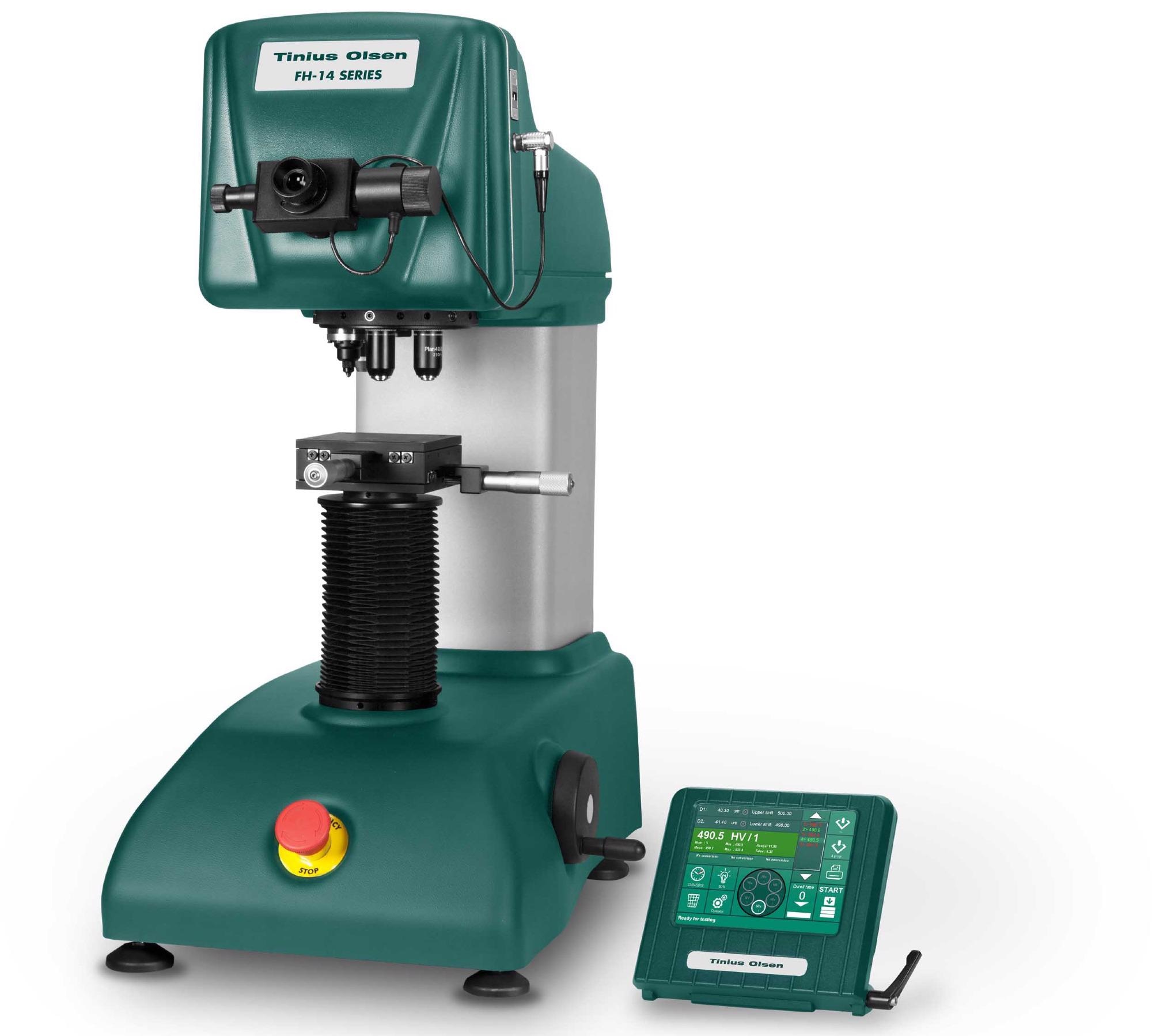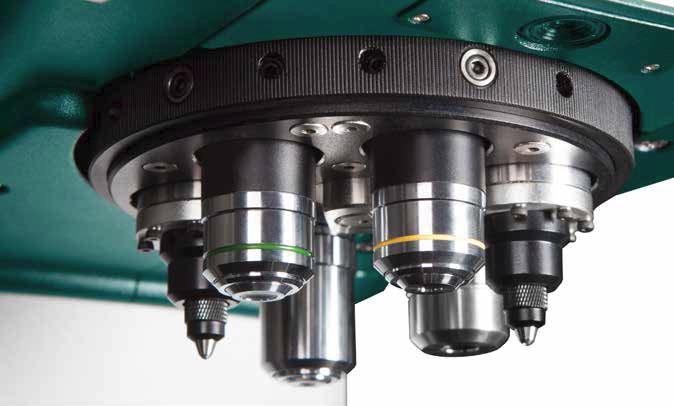Tinius Olsen has been at the cutting edge of materials testing R&D for over 140 years and has recently added a new variation of its extremely successful FH Series range of Micro Vickers, Vickers and Micro Brinell hardness testers: the FH14
The FH14 improves on traditional hardness testing methods, introducing features such as combined intuitive operator software and digital/optical image evaluation while eliminating user influence on final test results.
By introducing a novel force actuator system, which utilizes an electronically controlled closed-loop system and sophisticated force sensor technology, the FH14 facilitates forced feedback data acquisition to reach the highest levels of accuracy, reliability and repeatability on each of the forces used for a particular test.

Image Credit: Tinius Olsen
“In addition to the advanced electromechanical force application system, the FH-14 offers superior quality mechanical and optical components, as well as innovative software functions of I-Touch™ workflow control,” said Sean Malloy, Hardness Application Testing and Technical Specialist at Tinius Olsen.
“This allows file storing, test program setting and storing, limit settings, conversions to other hardness scales, system setup and convex and concave test settings that contribute to the high reproducibility of test results,” comments Malloy.
The instruments are easy to navigate through all the functionality, making it easy for an operator to learn the machine operating routine. Therefore training is simplified. There is also the ability to store results with pictures, which enables recall of those pictures for re-evaluation of the measuring process.
Sean Malloy, Hardness Application Testing and Technical Specialist, Tinius Olsen
The FH14 has been developed for integration within an automated system, which harvests data from a number of machines conducting simultaneous testing tests. This can be a combination of dimensional, flexure, hardness and tensile testing with all samples fed robotically.
While the FH14 liberates technicians, giving them time for other tasks, the automated system ensures precise sample positioning and imaging, improved accuracy and exceptional levels of repeatability while boosting overall productivity.
As mentioned, user-related errors are nullified, which are typically caused by prolonged use resulting in fatigue, eye strain and inevitable inconsistencies, which can be a common issue in micro hardness testing.
We have 6 models in the FH14 segment with a load range of 1 gram to 31.25 Kgf. The FH14 Series of testers can do micro/macro Vickers, Knoop and by request the FH14 can do light force Brinell testing as well. It’s a marvellous combination of testing in one package.
Sean Malloy, Hardness Application Testing and Technical Specialist, Tinius Olsen

Image Credit: Tinius Olsen
Key Features of the FH14
- Ability to store results with pictures, recall and export them to network storage to backup and store results over a prolonged period of time
- Anti-collision technology housed in the turret to ensure samples are protected from inadvertent contact with the machine
- Capacity to view the indentation through a microscope and camera to examine the measurement, with Dual optical paths allowing simultaneous operation of both functions
- Easy operator navigation through all functionalities that can be equipped with four graduating levels of automation. This includes a motorized stage that can conduct pattern testing with automatic results without the need to add complicated functions which may confuse users.
- Multi-positional touch screen display as standard
- Turret that can house up to 4 different objectives – 2 indenters
- Up to 3 stacked load cells with an accuracy of less than 0.5%

Image Credit: Tinius Olsen

This information has been sourced, reviewed and adapted from materials provided by Tinius Olsen.
For more information on this source, please visit Tinius Olsen.